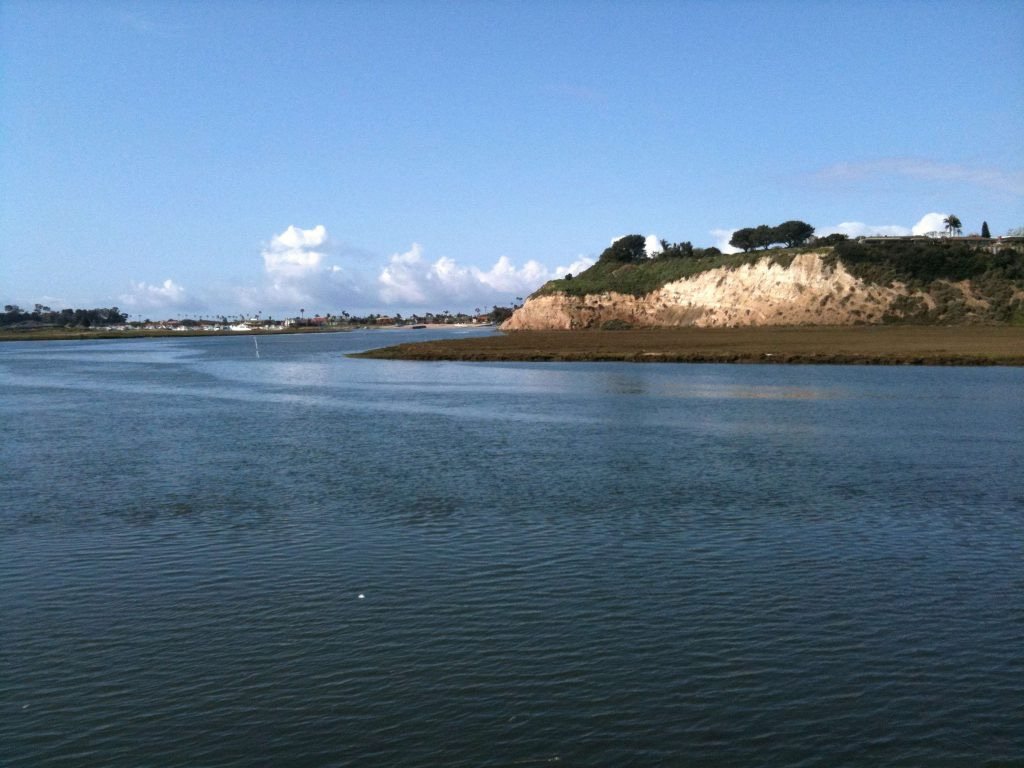Giving Back at Back Bay: Preserving Native Habitats
Photo by Jim Collins ©
Bikers, runners, and hikers fill the surrounding trail, observing the endangered wildlife and enjoying their early mornings. Houses lined on the hills overlook the busy nature center where volunteers and Newport Bay Conservancy staff remove invasive species such as sea lavender or plant seedlings in the Big Canyon. On June 8th, The Giver's Guide visited NBC to assist in their short-pod mustard removal project.
The sixty-acre basin, an ecological reserve legally unable to be further developed, home to endangered coastal wetlands, is in upper Newport Beach, protected by the Newport Bay Conservancy. Promoting diversity, restoration, education, research, advocation, and preservation, NBC aims to protect and preserve what's left of the coastal wetlands and water quality directly relating to the ocean (trash and pollutants) that lost 90-95% due to coastline development. With over thirteen habitats and twenty-one distinct plant communities, NBC is a sanctuary for birds and native plants. From 1960, when this land was almost developed into a marina, "people who lived around the bay were frustrated and wrote to politicians to protect this place. They fought ten years of legal battles," states restoration coordinator Zachery Flores, “making this land particularly special to Orange County locals.” The Newport Bay Conservancy hopes to form a community of visitors and volunteers that raise awareness for protecting the environment and enjoying the natural beauty of this precious resource for years to come.
Alongside regular volunteers, Google employees participating in a company service trip, and other students, we were given a tour of the Conservancy Center and a brief introduction to the short-pod mustard project. The goal was to clear out as many invasive short-pod mustard plants in the canyon as we could in the allotted three hours. At first, we all exchanged hesitant glances; the mustard plants were five-foot tall stalks adorned with yellow flowers, bushes covering almost the entire land. It seemed impossible. But with the staff's reassurance, we all put on gloves and started shoveling, pulling, and cutting. Volunteers set up tarps to collect the weeds as we began to uproot the problem. Each green tarp was rapidly compiled with voluminous weeds and carried to disposal. Within the first few hours, the yellow flowers disappeared from our work area. When we began growing tired of all the plants, NBC supplied cold refreshing water as we took a break and admired our teamwork. By the end of the day, an astonishing portion of the field was removed, and Flores explained how each project usually takes five to fifteen years to complete, but with the help of abundant volunteers, the time frame would be greatly reduced. This specific habitat of one of the last natural canyons in our community is home to the California GnatCatcher, which feeds on the native plants competing for resources with short-pod mustard plants. After removing these invasive plants, the result of a self-sustaining ecosystem will be closer to completion.
Volunteers can participate in removing invasive species, sowing seeds, transplanting seedlings, and planting trees with "no experience necessary; just be ready to learn about plants and being outdoors," says Zachery Flores. Though it was not easy work and you are almost guaranteed to break a sweat, volunteering with the Newport Bay Conservancy allows you to visually comprehend the impact you are making as you rip out the problem, literally. Volunteering at the NBC was a rewarding experience, enabling us to learn about the importance of restoring this center of our community that provides water quality and biodiversity in our environment and The Giver’s Guide encourages all volunteers to invest in the future of Back Bay by helping create a self-sustaining ecosystem.

